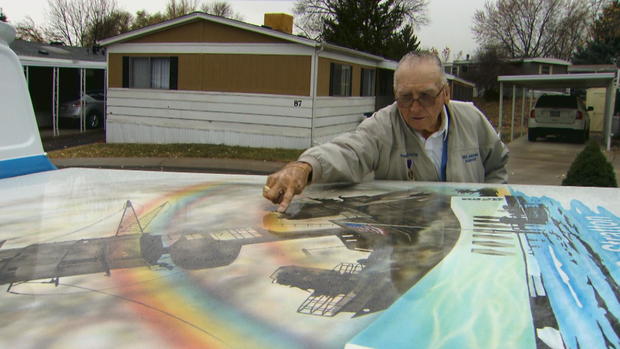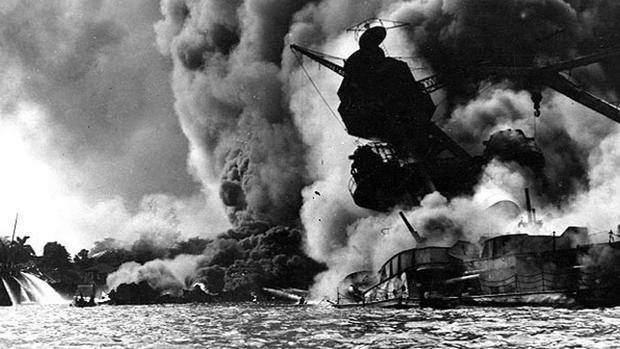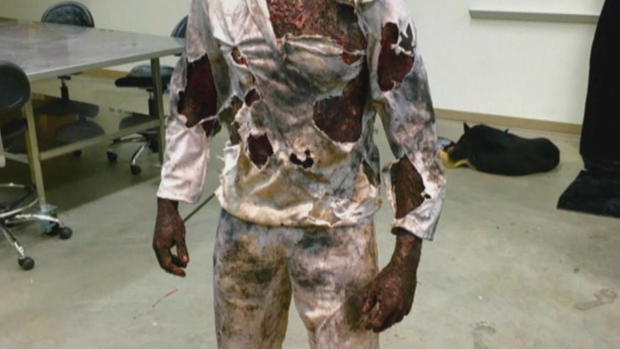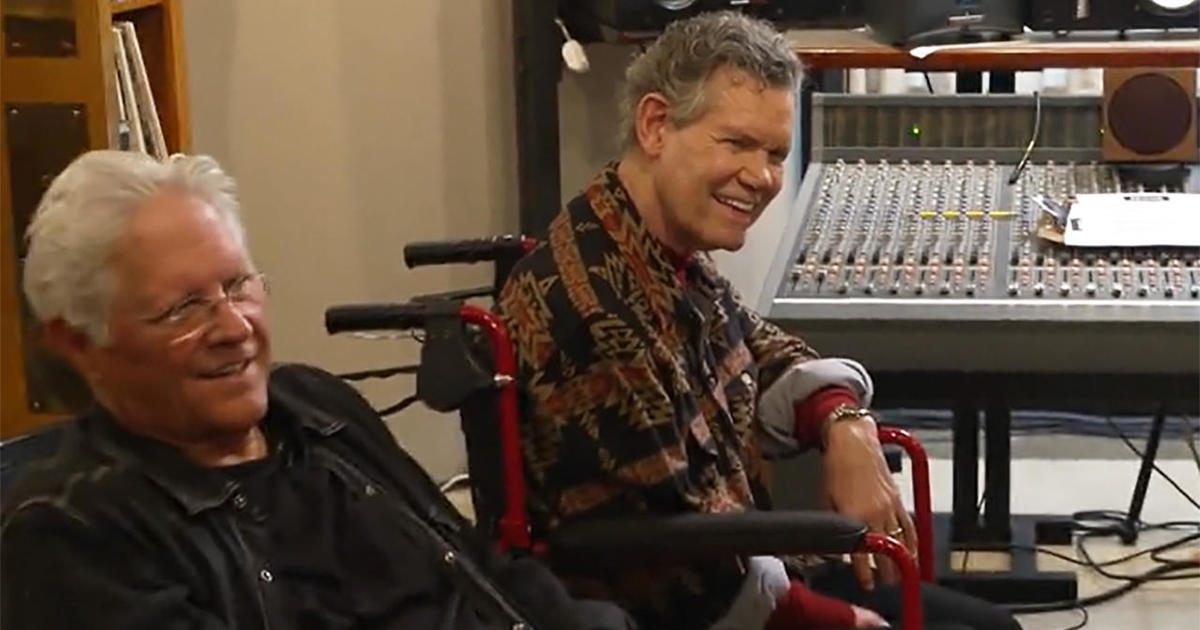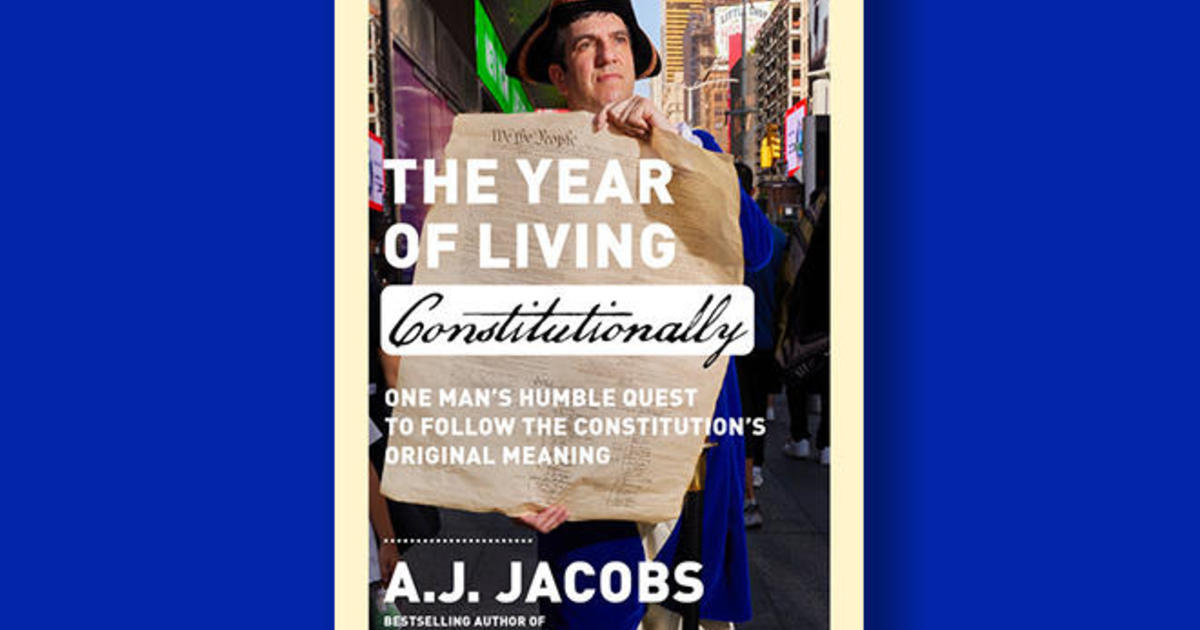75 years later, Pearl Harbor survivor recalls horrors of "burning alive"
Next week marks 75 years since the Japanese attack on Pearl Harbor. Now comes the first memoir of that day from the perspective of a survivor who was aboard the USS Arizona, reports CBS News correspondent John Blackstone.
A painting of the battleship Arizona graces the back of Donald Stratton’s classic truck. Now at 94, he points out the anti-aircraft gun, where as a 19-year-old he fought the Japanese sneak attack on Pearl Harbor on December 7th, 1941.
“Some of the pilots waved at us and smiled,” Stratton recalled.
“They were waving at you while they were shooting at you?” Blackstone asked.
“That’s right. And we were firing at them but we could see our bursts in the sky and they were way short,” Stratton said.
The Arizona was one of eight battleships under unrelenting Japanese air strikes, as seen on the Smithsonian channel series, “The Lost Tapes.”
“Just a fireball about six or 800 feet in the air and that just engulfed us where we’re at,” Stratton said. “I got burned over about 60 percent of my body. We were just actually burning alive.”
“Some of his scars you can see, some you can’t,” Blackstone said, speaking to Don’s son, Randy Stratton.
“Some he’ll never get over his whole life,” Randy said. “Any noise even to this day, the phone goes off, he jumps through the ceiling because of that bomb going off.”
For nearly 75 years, Stratton said little about how he survived as more than 1,100 others on the Arizona perished. But he has finally written a memoir called, “All the Gallant Men,” revealing things he never even shared with Velma, his wife of almost 67 years.
“When I read the book, I cried,” Velma said. “He really never talked about it. He never told me his story about anything, about what happened.”
Of the explosion, Stratton writes: “The flames found us… burning off our clothes, our hair, our skin… Men stumbled around on the deck like human torches, each collapsing into a flaming pile of flesh.”
A makeup artist’s recreation of his injuries is hard to look at.
“How do you go on fighting or trying to survive with that amount of pain?” Blackstone asked.
“Well, it’s self-preservation,” Stratton said. “I just pulled the skin off my arms and threw it down because it was in the way.”
“You pulled the skin off your arms,” Blackstone said, startled.
“Well, I was burned — it just hanging down there,” Stratton said.
With flames below him and using badly burned hands, he somehow pulled himself along a rope about 80 feet to safety on another ship.
“When you were coming across that rope, the Japanese are still strafing?” Blackstone asked.
“Oh yeah, they were still bombing and strafing, everything, yeah,” Stratton said.
Recovery meant months of searing pain and surgeries. When doctors wanted to amputate his limbs, Stratton refused.
“Did you think you were going to make it?” Blackstone asked.
“I don’t think it ever entered my mind that I wouldn’t,” Stratton said.
And he wouldn’t be kept away from the fight. A little more than a year after Pearl Harbor, he reenlisted and fought in the Pacific.
“Did you think you had a score to settle?
“Thought about a little revenge, but we had a job to do,” Stratton said.
Over the years, he has returned again and again to the Arizona Memorial.
“It’s very sad. That’s a very sacred place,” Stratton said. “I lost so many shipmates that day. It’s like going back and losing them all over again.”
On the 60th anniversary, Japanese pilots who attacked Pearl Harbor came in peace and were greeted with friendship by some — but not all — of the American veterans.
“Have you managed to forgive Japan?” Blackstone asked.
“Let’s put it this way: eleven-hundred-and-sixty-seven men out there on that Arizona sure as hell wouldn’t shake hands with them, so I’m not going to do it,” Stratton said.
Next week on the 75th anniversary, he’ll return with his whole family, including great-grandchildren.
“Knowing that probably it will be last time,” Velma said, with tears in her eyes. “And that’s hard.”
But the Stratton family vows never to forget, like granddaughter Nikki. Each wears a locket holding a fragment of the USS Arizona.
“To constantly remind us where my grandfather came from. The Arizona is in our blood, quite literally in our blood,” Nikki said.
For most who visit the Arizona Memorial now, this sacred place is part of distant history. But it’s not distant at all for Donald Stratton, as he writes in “All the Gallant Men”: “…I had lost a part of myself in the ruins of that ship, and a big part of my family in the men who died there… A part of myself that now would be forever entombed with them.”
